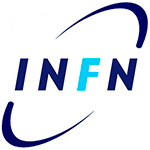Dr. Gabriele Lo Monaco
Quantum Extreme Learning Machine for quantum chemistry and biological tasks
Among the paradigms of quantum supervised machine learning, quantum reservoir computing, and specifically quantum extreme learning machine (QELM), have emerged as some of the most promising approaches. The notable advantages of QELM lie in the simplicity of its optimization routine which require minimal resources. Classical data are encoded in the quantum state of input qubits, with the choice of encoding determining model’s expressivity. The information is distributed across a reservoir interacting with the encoding qubits through a fixed scrambling dynamics that does not require any optimization during training. The reservoir is then measured and the outcomes are collected on a classical computer for post-processing, the optimization step, involving a simple linear regression to fit the target data. We present the first implementation of QELM on NISQ devices with applications to quantum chemistry and biological tasks of practical interest. We use QELM to reconstruct the potential energy surface of various molecules, mapping the geometry of a molecular species to its energy. Our setup outperforms classical neural networks and other quantum routines such as VQE, while minimizing quantum resource costs. It is scalable and has controlled depth, making it suitable for practical implementation on real hardware. The implementation performed on IBM Quantum platforms yielded encouraging results, with the average error close to chemical accuracy and no need for error mitigation. In the biological domain, we employ QELM as a support vector machine for protein classification on large experimental datasets. A practical example is classifying proteins based on their interaction with angiotensin enzyme, predicting peptides with anti-hypertensive effects that could contribute to cardiovascular health. The proteins are described in terms of 40 descriptors of biological relevance, such as aromaticity or hydrophobicity, a large number of input features presenting a challenge and benchmark for the current status of QELM. This second application confirms the feasibility of QELM and manifests an interesting resistance to statistical noise and decoherence, suggesting its potential for imminent applications in industrial pharmacology.





